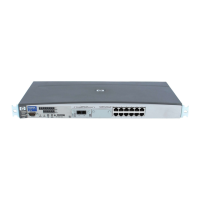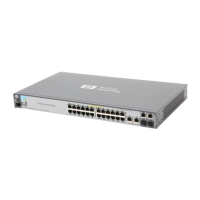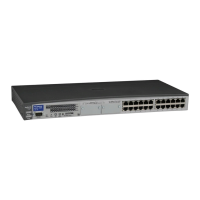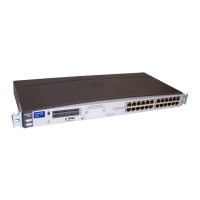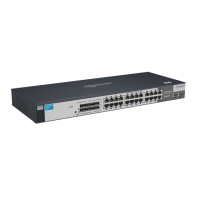11-14
Port Trunking
Port Status and Configuration
The following examples show how to create different types of trunk groups.
Configuring a Static Trunk or Static LACP Trunk Group.
For switches covered in this guide:
Syntax: trunk <port-list> < trk1 ... trk24 > < trunk | lacp >
The following example uses ports 4 - 6 to create a non-protocol static trunk
group with the group name of Trk2.
ProCurve(config)# trunk 4-6 trk2 trunk
Removing Ports from a Static Trunk Group. This command removes
one or more ports from an existing Trkx trunk group.
Caution Removing a port from a trunk can result in a loop and cause a broadcast storm.
When you remove a port from a trunk where STP is not in use, ProCurve
recommends that you first disable the port or disconnect the link on that port.
Syntax: no trunk < port-list >
This example removes ports 4 and 5 from an existing trunk group.
ProCurve(config)# no trunk 4-5
Enabling a Dynamic LACP Trunk Group. In the default port configura-
tion, all ports on the switch are set to LACP Passive. However, to enable the
switch to automatically form a trunk group that is dynamic on both ends of
the link, the ports on one end of a set of links must be LACP Active. The ports
on the other end can be either LACP Active or LACP Passive. This command
enables the switch to automatically establish a dynamic LACP trunk group
when the device ports on the other end of the link are configured for LACP
Passive.
